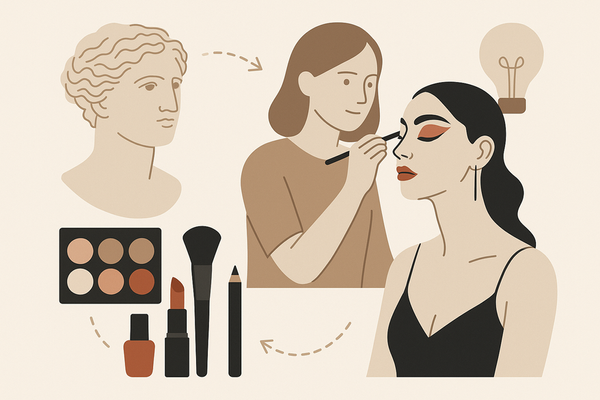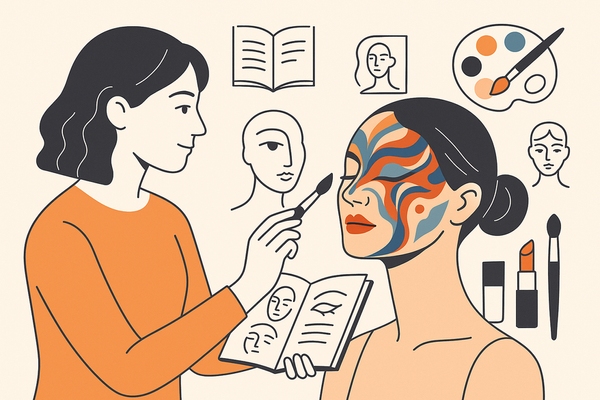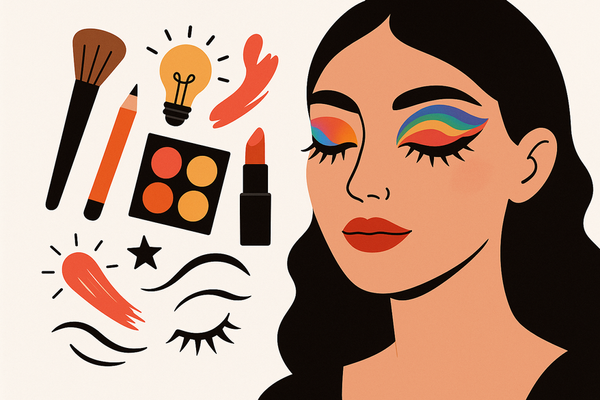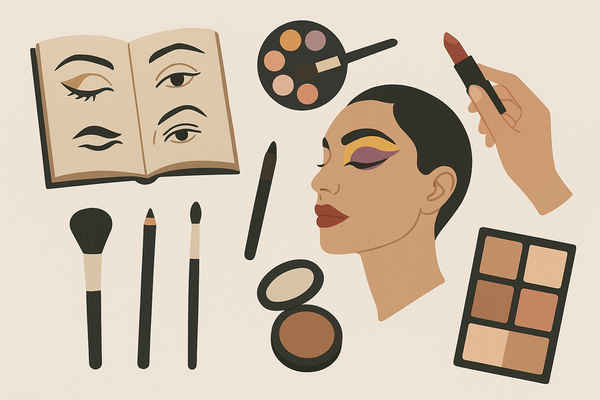Unlocking the Artistry of Creative Makeup Designs: A Comprehensive Guide
Explore the evolution and techniques of creative makeup designs, embracing individuality and avant-garde artistry in this comprehensive guide.
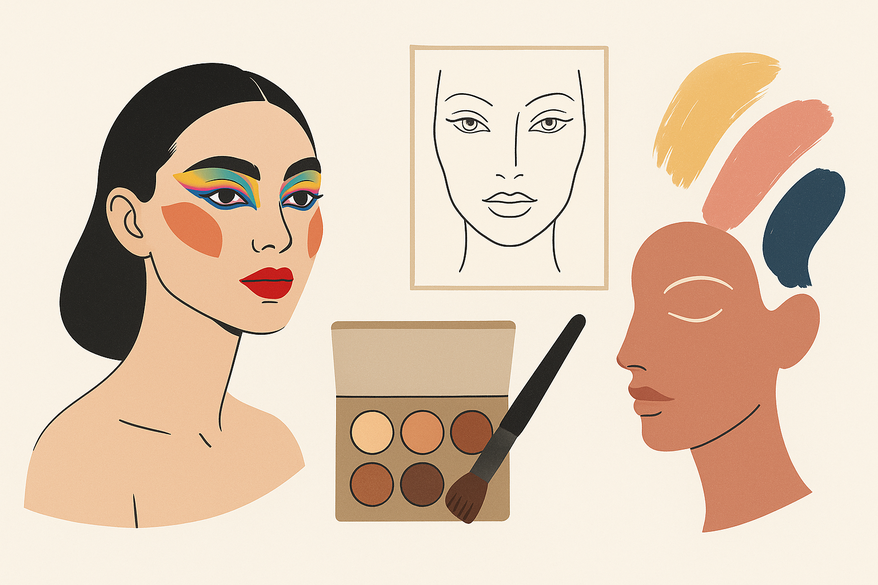
Estimated reading time: 10 minutes
Key Takeaways
- Explore the rich history of makeup from ancient rituals to modern artistry.
- Master techniques like color blending, graphic lining, and textural play.
- Follow a clear step-by-step process to bring your creative concepts to life.
- Use specialty tools, AI previews, and skin-safe materials for professional results.
- Tap into tutorials, influencers, and workshops for inspiration and growth.
Table of Contents
- Historical Background and Evolution of Creative Makeup Designs
- Key Trends Shaping Creative Makeup Designs
- Landmark Artists
- Elements of Creative Makeup Designs
- Tools and Products
- Inspirational Trends and Examples of Creative Makeup Designs
- Step-by-Step Process for Achieving Creative Makeup Designs
- Tips and Best Practices for Creative Makeup Designs
- Resources and Inspiration for Creative Makeup Designs
- Conclusion
Historical Background and Evolution of Creative Makeup Designs
From ancient pigments to digital artistry, creative makeup has always been a channel for self-expression and storytelling. In early civilizations, cosmetics served spiritual and status symbols. The rise of theater and cinema in the 20th century brought prosthetics and special effects, while contemporary social platforms turned faces into *dynamic canvases*.
Key Trends Shaping Creative Makeup Designs
- Drag artistry introduced bold contouring and theatrical color schemes.
- Fantasy and sci-fi films influenced scale textures and alien motifs.
- Avant-garde runway shows treat makeup as live performance art.
Landmark Artists
- Pat McGrath: Maximalist editorials with glitter, foils, and opulent textures.
- Isamaya Ffrench: Sculptural pigments, 3D elements, and avant-garde placements.
Elements of Creative Makeup Designs
Color Blending
- Painterly Gradients: Seamless hue transitions for a soft-artic effect.
- Foiling: Metallic brilliance from high-impact shadows.
- Halo Eye: Central lid highlight surrounded by depth.
Graphic Lining
- Cut Creases: Sharp lines divide lid zones with architectural precision.
- Negative-Space Liners: Floating shapes that let skin peek through.
Textural Play
- Glitters, metallic flakes, and sequins for shine.
- 3D embellishments like crystals or feathers—*always* dermatologically tested.
Tools and Products
- Classic brushes, sponges, and palettes for base artistry.
- Body paints, alcohol-activated colors, and prosthetic adhesives for specialty looks.
- Preview designs digitally with Makeup Check AI before committing to color and texture.
See how the platform works:

Inspirational Trends and Examples of Creative Makeup Designs
Fantasy & Avant-Garde
- Dragon-scale textures layered with metallic paints.
- Asymmetrical jewel-tone blocks evoking otherworldly creatures.
Festival Makeup
- UV-reactive pigments that glow under blacklight.
- Rhinestones and temporary metallic tattoos for live events.
Editorial Runway Artistry
- Graphic color-blocking extending onto temples and neck.
- Geometric “cubist” lines that challenge the eye.
Step-by-Step Process for Achieving Creative Makeup Designs
- Research & Theme Development
- Gather mood boards from art references and pop-culture imagery.
- Define your concept—fantasy creature, abstract art, or futuristic robotics.
- Sketching & Planning
- Use face charts or digital mockups to map color zones.
- Mark spots for textures, gems, or prosthetics.
- Skin Preparation
- Cleanse and moisturize thoroughly, then prime for strong adhesion.
- Building the Design
- Layer matte shadows first, then add metallics and glitters.
- Secure 3D pieces with skin-safe adhesive.
- Setting & Assessment
- Lock in your look with setting sprays or powders.
- Test under daylight, LED, and stage lights for consistency.
- Documentation
- Photograph each step and note product names and techniques.
Tips and Best Practices for Creative Makeup Designs
Skin Safety & Preparation
- Patch-test new products on the inner arm.
- Choose dermatologically tested formulas to avoid irritation.
Base & Balance
- Match foundation to skin tone for a seamless canvas.
- Use negative space to balance bold graphics.
Longevity
- Select long-wear, waterproof formulas for festival or performance.
- Seal pigments with a reliable setting spray.
Dos & Don’ts
- Do clean your tools after each use and test lighting in advance.
- Don’t overload skin with heavy layers that can crack or irritate.
Resources and Inspiration for Creative Makeup Designs
- YouTube Tutorials
- Pat McGrath Labs: Avant-garde editorial walkthroughs.
- NYX Professional Makeup: Bold blending demos.
- Influencer Profiles
- @patmcgrathreal – Maximalist experimental looks.
- @isamayaffrench – Sculptural pigment art.
- Online Communities
- Reddit’s r/MakeupAddiction – Share progress and get feedback.
- Instagram #creativemakeup – Discover fresh ideas daily.
- Courses & Workshops
- Domestika: Editorial and fashion makeup classes.
- Skillshare: Body painting and creative techniques.
Conclusion
Creative makeup design is where technical skill meets artistic expression. From ancient rituals to Instagram reels, this art form continues to evolve. By understanding its history, honing advanced techniques, and following a clear process, you can transform your face into a canvas of storytelling. Embrace experimentation, connect with the community, and let your creativity shine.
FAQ
- What is creative makeup design?
It’s the art of using cosmetics to create expressive, themed, or avant-garde looks beyond everyday beauty. - How do I start experimenting?
Begin with a simple concept, gather mood boards, sketch your design, and practice color blending on face charts. - Which products are essential?
Invest in quality brushes, long-wear pigments, skin-safe adhesives, and a reliable setting spray. - How can I ensure skin safety?
Always patch-test, choose dermatologically tested formulas, and remove makeup gently at the end of the day. - Can beginners try advanced looks?
Absolutely—start small, follow tutorials, and build confidence by layering techniques over time.

